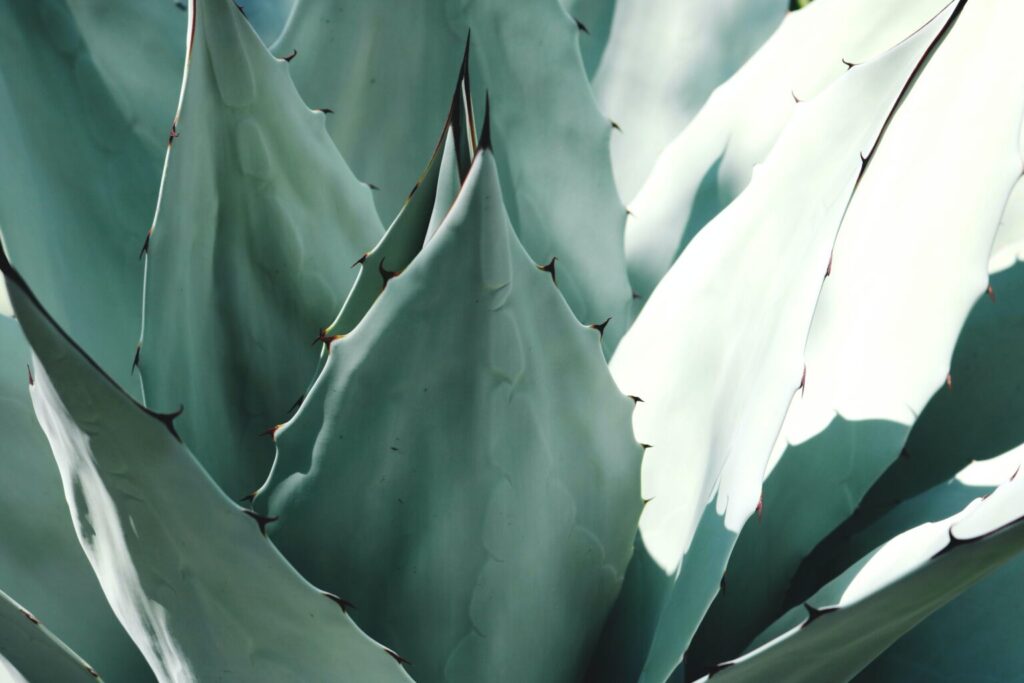Given the strong increase in demand for tequila that has occurred in recent years, both for domestic consumption and for export, the need to increase the production of Agave tequilana Weber Var. Azul, which is the raw material for its production, has led to the search for new areas for the production of agave, in addition to those that have traditionally produced it in the Tequila Denomination of Origin Zone, where there is an area of 40,000 ha. with about 107 million plants, in municipalities of the states of Jalisco, Guanajuato, Michoacán, Nayarit and Tamaulipas. The agave adapts to semi-arid and sub-humid regions with sunny days and has low tolerance to low temperatures, especially at night. It prefers medium-textured soils such as clay loam or sandy loam, on land with a high degree of slope. For the selection of areas for agave production, the following main variables are examined: night temperature, probability of frost, altitude, slope of the soil and annual precipitation (Corral, 2007).

Agave Plant Taxonomy
It belongs to the agavaceas family, which are grouped in the order Asparagales. The Agave genus is made up of 197 taxa: 136 species, 26 subspecies, 29 varieties and 7 forms. In 1902, Weber described the Agave tequilana and to date the varieties of Agave tequilana Weber lack particular taxonomic studies, and the complete characteristics of each one are still unknown (Rulfo, et al, 2007).
Botanical description of the Agave
Agave tequilana Weber blue variety belongs to the subgenus Agave and to the Rigidae section, which also includes a large number of fiber and mezcal species that are found in Mexico and Central America but are absent in the United States. This group is recognizable by the shape of its narrow and very rigid leaves. The botanical description of the tequila mezcal is as follows:
Agave tequilana Weber 1902 (Weber)
Succulent plant that spreads radically from 1.2 to 1.8 m in length. Its stem is thick, short from 30 to 50 cm. tall at maturity. Leaves from 90 to 120 cm. lanceolate, acuminate with firm fibers, almost always rigidly stretched, concave from ascending to horizontal; widest towards the middle of the leaf, narrow and thick towards the base, usually bluish-glaucous to gray-green. The margin is straight to wavy or challenging, the teeth generally of regular size and irregularly spaced, mostly 3 to 6 mm. long to the middle of the sheet. The apices slender, curved or flexed from a short height to the pyramidal base, light to dark brown, 1 to 2 cm long, rarely long, flattened or openly furrowed above, the base broad, dark brown decurrent or nondecurrent. The inflorescence is a panicle 5-6 m tall, densely branched throughout, with 20-25 long diffuse umbels of green flowers and pink stamens. Flowers 68 to 75 mm long with bracteoles on pedicels 3 to 8 mm long. Ovary 32 to 38 mm long, cylindrical with a short neck, inconstricted, almost ending in a point on the base. Floral tube 10 mm wide, furrowed funelliform, unequal petals 25 to 28 mm long by 4 mm wide, linear, erect but quickly loose at anthesis, then turning brown and dry. Filaments 45 to 50 mm long, bent inward near pistil, insert 5 to 7 mm near base of tube; anthers 25 mm long. The fruit is an oval to briefly cuspid capsule (Rulfo, et al, 2007).

Producing regions of the Agave
The territory of origin is established as the one comprised by all the municipalities where the agave of the State of Jalisco is cultivated; in the State of Guanajuato, the municipalities of Abasolo, Ciudad Manuel Doblado, Cuerámaro, Huanímaro, Pénjamo, Purísima del Rincón and Romita. The municipalities of Briseñas de Matamoros, Chavinda, Chilchota, Churintzio, Cotija, Ecuandureo, Jacona, Jiquilpan, Maravatío, Nuevo Parangaricutiro, Numarán, Pajacuarán, Peribán, La Piedad, Régules, Los Reyes, Sahuayo, Tancítaro, Tangamandapio, Tangancícuaro, Tanhuato, Tingüindín, Tocumbo, Venustiano Carranza, Villamar, Vistahermosa, Yurécuaro, Zamora and Zináparo, in the State of Michoacán. The municipalities of Ahuacatlán, Amatlán de Cañas, Ixtlán, Jala, Xalisco, San Pedro de Lagunillas, Santa María del Oro and Tepic, of the State of Nayarit and the State of Tamaulipas, the municipalities of Aldama, Altamira, Antiguo de Morelos, Gómez Farías , González, Llera, Mante, Nuevo Morelos, Ocampo, Tula and Xicoténcatl (Rulfo, et al, 2007).
 AgronoBlog – Agriculture Blog
AgronoBlog – Agriculture Blog